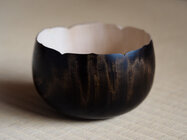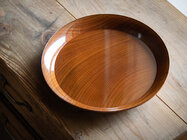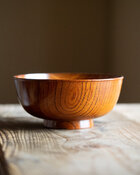- Joined
- May 1, 2024
- Messages
- 18
- Likes
- 143
- Location
- Yamanaka Onsen, Ishikawa, Japan
- Website
- www.sentomono.com
Hi everyone! I am new to all things woodturning forums and communities but I am excited to get to know more woodturners around the world and learn from various techniques. I live and work in Japan, where I just graduated from a 2-year course at the only woodturning school in the country. I studied on and currently use a Yamanaka Style Japanese lathe, a machine used sitting down, powered with two belts, used with jam chucks, and in forward as well as reverse. I make my own tools and turn a lot of small endgrain bowls for daily use. I first started turning on a western lathe about 5 years ago, while graduating in Product Design, but I have specialised in Japanese woodturning and urushi lacquering since. Glad to digitally meet you!



